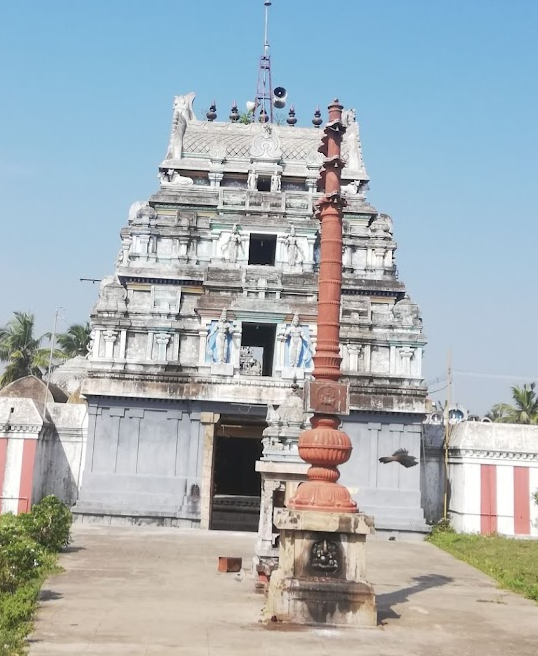Indira, the king of the Devas, approached the hermitage of Sage Gautama, who lived with his wife, Aakalika. With malicious intent, Indira transformed himself into a cock and crowed to signal dawn. Sage Gautama, adhering to his routine, left the hermitage for the river to fulfil his morning duties. Meanwhile, Indira, disguised as Gautama, spent time with Aakalika, who believed she was with her husband. Sensing something amiss, Gautama returned to the ashram.
Outraged by Indira's deceit, Gautama cursed him. Although Aakalika was chaste, Gautama turned her into a stone to purify her through the grace of Lord Rama. In desperation, Indira prayed to Lord Shiva, who advised him to create a Linga of sand and perform abhishek (ritual bathing) upon it. However, Indira realised that the sand Linga would dissolve in water, making the task impossible. For a long time, he endured the consequences of his wrongdoing, as Lord Shiva was reluctant to forgive him.
Turning his devotion towards Mother Ambica, Indira embraced the sand Linga and vowed never to misbehave with women again. His sincere prayers left finger imprints on the Linga. Pleased with Indira's repentance, Lord Shiva granted him forgiveness. As a result, the deity came to be known as Kai Chinneswarar, bestowing his blessings upon devotees alongside Mother Palvalai Nayaki.
Sthala Puranam :
Once, Indra desired Ahalya, the wife of Sage Gautama, and through deceitful means, managed to be with her. Upon discovering the truth, Sage Gautama cursed Ahalya to turn into stone, with the promise of her redemption during Lord Rama's incarnation. He also cursed Indra to develop a thousand pustules on his body as punishment for his misdeed. Despite fervent prayers to Lord Shiva, Indra found no relief due to the severity of his crime. However, Lord Shiva instructed him to create a Lingam out of sand and perform abhishekam (ritual bathing) to it.
Indra faced a dilemma, realising the impossibility of performing abhishekam to a sand Lingam, and in his desperation, he approached the Goddess with a gift of ivory bangles made from the tusks of Airavata. This gesture earned her the name Velvalai Nayaki (where "Vel" means white and "valai" means bangle), but it did not alleviate his suffering. In utter helplessness, Indra embraced the Lingam and wept, expressing genuine regret and penitence for his sins. Pitying him, the ever-forgiving Lord Shiva relieved Indra of his curse. The Lingam worshipped by Indra is the moola Lingam at this temple and bears the marks of his hands, hence the deity is known as Kaichineswarar (where "kai" means hand and "chinnam" means mark).
Following this puranam, the town was originally called Kaichinnam, which over time evolved into Kachanam. It is believed that the temple tank, located south of the temple, was dug by Indra using his Vajrayudham and is therefore named Vajra Teertham or Indra Teertham. Worshipping at this temple is said to absolve devotees of all sins.
Administration History :
The Kaichineswarar Temple is administered by the Madurai Adheenam, which oversees its rituals and maintenance. Historically, the temple has received patronage from various kings, including the Chozhas and Vijayanagara rulers. These monarchs contributed to its upkeep through endowments and land grants for rituals and celebrations. The temple's rich administrative history reflects its enduring significance within the region's cultural and religious landscape.
